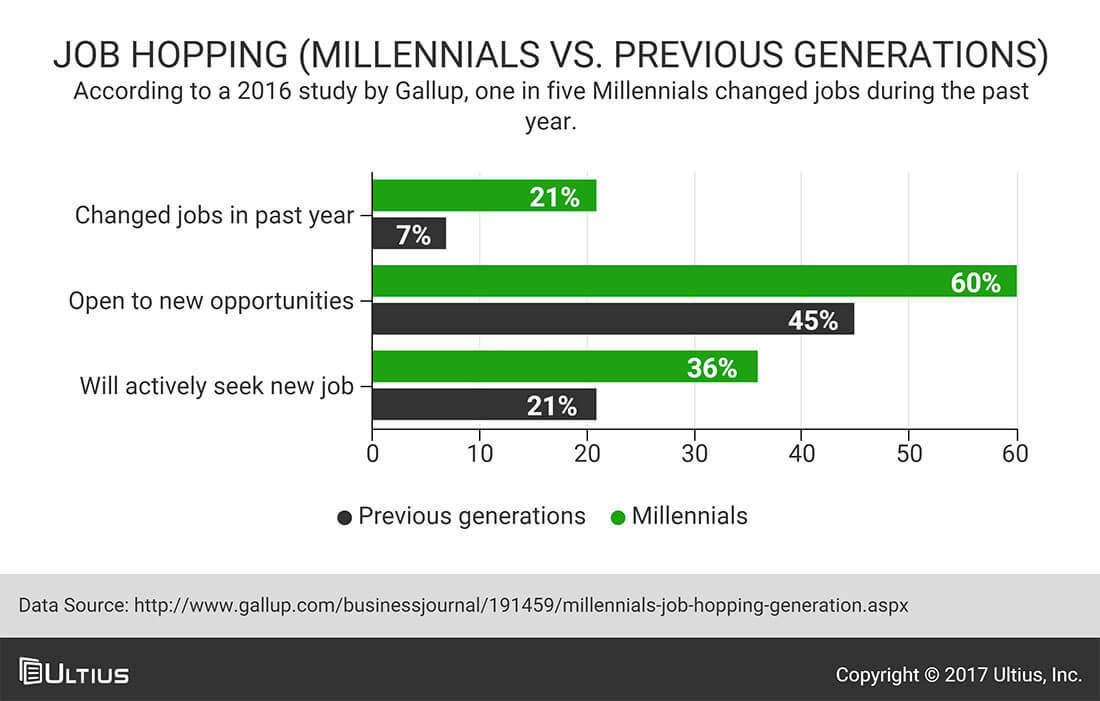Ultius Blog
Navigating Employment and Income Inequality as a College Graduate
Many problems exist today surrounding income and employment inequality in America. In the United States, Americans live by the national ethos of the American Dream. The American Dream is the ideal by which equality of opportunity is available to any American, allowing the highest aspirations and goals to be achieved. The American Dream is often in correlation with higher education. The idea is, in America, people can attain success no matter their social or economic background by working hard in school and the workplace.
Another popular idea in America is the phrase, “Pull yourself up by your bootstraps.” The phrase is common in American political discourse. It’s the metaphorical representation of “pulling yourself up” towards success without the help of external forces. Critics argue the phrase fails to consider the external forces that may hinder an individual from “pulling themselves up.” Which begs the following questions: “exactly how valuable is a college education? Is social mobility possible through higher education? If so, can a higher education overcome income and employment inequality?”
Are college degrees the key to solving income inequality?
Sometimes it seems like it is merely a rough world, and people need to get with the program or give up. But when one takes a closer look, analyzing all the different aspect available to be seen, a much dimmer view of the world unfolds. In comparing the works of Foster & Magdoff, Schlosser, and Jacobs, this bleak landscape is brought into precise clarity. The newly informed reader can approach the previously incomprehensible world with fresh eyes, ready to start making choices that will affect a new and brighter tomorrow. These three works make it very clear that a change is needed to even the playing field so that the American Dream can indeed be attained. If you work hard enough to get what you want, the fair American world will let you have it.
Debt and stagnation of wages
In “The Household Debt Bubble,” a chapter in Foster and Magdoff’s book, The Great Financial Crisis: Causes and Consequences, the problem of stagnant wages amid rampant inflation is examined. We have reached a point in time where consumer debt is now higher than consumer disposable income. This inversion caused by the rampant inflation while wages, stagnant since the 70s, have been unable to keep up. American consumers must take out loans to keep up with everyday expenses, including loans as an alternative to student financial aid. Unfortunately, those who take out loans have no hope of paying back these loans as their principle exceeds what is earned. Stack on top of that the interest and any fees associated with these loans and one can see that these financial circumstances describe an invisible debtor’s prison. Less than honorable intentions of a small number of self-interested parties in positions of power have given rise to the selling of bad ideas.
Over the last 40 years, the economy and wages have faced some ups and downs. Today, the real average wage (the wage after accounting for inflation) has approximately the same purchasing power it did in the 1970s. Most of the wage gains there have been have mostly flowed to the highest-paid tier of workers. By this logic, college students should be optimistic about wage gains flowing towards their tier in the workplace. Afterall, good fortune falls on those who are using LinkedIn effectively.
Dangerous working conditions
In the chapter “The Most Dangerous Job” in Eric Schlosser’s book Fast Food Nation, an ugly picture is painted. Schlosser tours a meatpacking plant backwards. He starts at the happy end where pre-cut meat products are put into the shiny packaging that we recognize daily in supermarkets across the country. But as he continues through, it gets grosser, rougher, and bleaker. Before starting the tour, Schlosser had to don a chainmail suit, goggles, and knee-high boots. We learn why later when the break-neck pace of the meat processing plant is described. Not only are these workers using dangerous and sharp cutting tools in their daily work environment of a windowless factory that is slippery with blood and viscera, but they are also racing against the clock.
The lesson learned is the profit margins are small and faster productivity means better profit. The workers of these plants work long shifts for low wages and are frequently injured. Schlosser reveals that despite serious injuries, workers are expected to stay on the job. It’s common for workers to be pressured into covering up injuries and not “rocking the boat” when it comes to getting appropriate care, time off, and compensation when they are injured.
One can argue people working at a meatpacking plant put on their work boots so that they can pull themselves up from their bootstraps. Skeptics may say, how has this helped elevate them? It hasn’t and not just because pulling yourself up by the bootstraps is literally physically impossible (even if the boots are high knee).
Higher education instead of increasing the minimum wage could help workers overcome dangerous working conditions. In theory, a meatpacking worker is only working at the plant temporarily and could pursue an education part-time with the help of scholarships or student loans. However, the dangerous conditions of a meatpacking plant are only metaphorical for a more significant issue.
The “Pull yourself up by the bootstraps” mentality would have one believe poverty is a problem based on personal irresponsibility instead of a structural problem. Living paycheck-to-paycheck is arguably one of the most dangerous conditions facing American workers.
In 2019, Representative Katie Porter asked Jamie Dimon, the CEO of JP Morgan and Chase, why he can’t pay his employees a living wage (News). The representative asked the CEO of the $2.6 trillion bank to solve a simple budgeting problem. Representative Porter found a job online in the city of Irvine, California (a state in which cities are increasingly struggling with homelessness). The job she found at Chase paid 16.50 an hour for an annual income of approximately $35,000. Porter used a bank teller named Patricia in her example; Patricia has one child as a dependent and would earn 29,100 after taxes.
After taxes, Patricia has $2,425 per month; she rents a one-bedroom apartment in Irvine, California for a total of $1,600 per month plus $100 for utilities. Patricia is left with a net $725 after putting a roof over her and her daughter’s head. Patricia is allotted $400 for car expenses and gas. Representative Porter cited the Department of Agriculture classifies a low food budget of ramen noodles for two people as $400 per month. Patricia is now left with -$75 but still has other expenses.
The cheapest cell phone plan is $40 a month, and Patricia has to pay $450 per month for afterschool childcare because banks are open during regular business hours. Patricia is left owing $565 per month while working full-time at Chase bank in Irvine, California.
Dimon could not solve the budgeting problem suggested by Representative Porter. He suggested Patricia works an entry-level position for individuals after high school, and she could potentially have his job one day. One can argue it would be possible for Patricia to pull herself up by the bootstraps with a personal loan while she finds works another job or attempts to pursue higher education.
Like what you’re reading? Learn how to write a resume with no job experience.
Equal pay for equal work
In Jerry Jacobs’ “Detours on the Road to Equality: Women, Work, and Higher Education,” we learn about the wage disparity that exists across gender lines. Women are consistently underpaid in comparison to their male counterparts, and they are underrepresented and pressured out of traditionally male-dominated fields.
Women now outrank men in the attainment of higher education degrees. Jacobs suggests that job security and higher wages are the two main reasons for this phenomenon. Women who have a qualifying degree are less likely to be removed from their position since there are less qualified candidates. There is also a higher need for a company to prove a lack of job performance since the candidate is trained. And of course, the general higher-range of wages that come with being college-educated are also very appealing. Despite the greater opportunities that exist for women on the other side of higher education, inequality still exists. The measures women take to provide security for themselves are simply band-aids affixed to a broken system.
The fight for women’s rights and equal pay is real and transcends various industries. Megan Rapinoe, a professional athlete in the U.S. women’s soccer team, and her teammates are leading the charge on equal pay. The U.S. women’s soccer team defeated the Netherlands 2-0 to win the 2019 FIFA Women’s World Cup while a chant of “Equal pay!” broke out. The chant was in reference to an ongoing lawsuit against the United States Soccer Federation, which has been paying the female players significantly less than the male players. It’s worth noting, women’s team is more successful than their male counterpart.
Want to read a success story? Check out these five success stories on essay writing services.
According to the Economic Policy Institute (EPI), “the median U.S. woman worker makes 83 cents for every dollar earned by her male counterpart. Black and Latina women workers make 65 and 59 cents for every white male dollar.” According to PayScale’s The State of the Gender Gap 2019, women with advanced degrees are under-utilized and under-compensated for their education. The wage gaps between men and women tend to be greater for those with more advanced degrees. Women with MBAs face the largest uncontrolled pay gaps, implying that men and women are separated into different jobs. Overall, the uncontrolled gaps (median salary measures for all men and women) ranges between 0.79 and 0.90 relative to every dollar earned by a white male with the same degree. These statistics show despite the achievement of higher education; women are still subject to payment inequality.
Class-based distribution of income
In “The Household Debt Bubble,” Foster states that “it is an inescapable truth of the capitalist economy that the uneven, class-based distribution of income is a determining factor of consumption and investment” (17). This idea sounds good enough at first glance, but questioning its verity yields positive outcomes for the inquisitive reader. Is this really an inescapable truth? Some would argue that the middleman fees inherent in a capitalist system are necessary for maintaining distribution. And others would say that these middleman fees are actually justifiable fees for the executive—the person who holds the responsibility should the venture fail, the person who has the initial idea and figures out how the whole system of their venture will take place. And there is merit to this point. If you make something, it should be yours. But proponents of keeping the heavily unfair and classist systems that this world is plagued with using just these points to justify the burdens that these systems create. In a perfect society there wouldn’t be a reinforcement of race and class but in today’s world, amassing wealth appears to be the primary objective. It seems there are a lot of people that are so busy “getting theirs” that they don’t notice the giant downward spiral that ensures a dark future for everybody.
In “The Most Dangerous Job,” Eric Schlosser quotes an ex-meat processing plant worker named Kenny: “They used me to the point where I had no body parts left to give, then they just tossed me into the trash can” (Schlosser 343). Kenny started out strong and fit, but he was illiterate. That didn’t leave him with many job options, so he began working at the meat processing plant. He was injured several times on the job, each time being less able, and each time being reassigned to a more horrible job in a bid to get him to quit. He was fired when he didn’t come in for work after having a major heart attack. The bottom line of the profit margin of the meat packing plant marginalized Kenny into a “broken tool” as opposed to a human being. And so, he was disposed of.
In Jacobs’ “Detours on the Road to Equality Women, Work, and Higher Education,” an interesting comparison is made to the wages of jobs that are similar but staffed by a majority of one type of gender—e.g., the majority of upholsterers are men while the majority of dressmakers are women. This is an essential comparison because a lot of times, wage inequality among genders is talked about in the abstract. It’s almost a case of “everybody knows.” But here it is made quite plain. Similar skills in either area have vastly different pay grades. The same holds true for accountants (mainly women) and workers in the financial services industry (mainly men).
Interested in going back to school? Check out these scholarship opportunities and financing for adults going back to school.
Greed is the common denominator
There is an interesting connection between these three works that are being discussed. In each instance of inequality or injustice, the environment that fosters these things seems unchangeable. In Schlosser’s “The Most Dangerous Job in the World,” we get a few references to the evil greedy bosses that run the national meatpacking plants, which could be compared to CEOs of white-collar institutions such as banks.
In Fosters’ “The Household Debt Bubble,” references to greed fueling the system are made. In Jacobs’ “Detours on the Road to Equality: Women, Work, and Higher Education,” there are no references to shady bosses or overlords, only a pervasive miasma of undefeatable sexism. There is a sense that things will not change because the current societal norms that are being rallied against in these chapters and essays are so large as to be immovable. Even Foster and Magdoff concede this fact with the following quote:
The tragedy of the U.S. economy is not one of excess consumption but of the ruthless pursuit of wealth by a few at the cost of the population as a whole. In the end, the only answer lies in a truly revolutionary reconstruction of the entire society. Such a radical reconstruction is obviously not on the table right now. Still, it is time for a renewed class struggle from below—not only to point the way to an eventual new system but also, more immediately, to protect workers from the worst failures of the old. There is no question where such a struggle must begin: labor must rise from its ashes (53).
Did you know? You can buy an essay with proper quotes from Ultius.
Conclusion
Right now, there is a privileged class where income and mobility are within one’s grasp. This privileged class is the educated male, and depending on the particular region being discussed, the race of the educated male may play a factor in the privileges extended to them. Women and those who are uneducated are at a disadvantage because it is that much harder to find a place within the system.
Other victims of this are those people who belong to the poorer classes. It takes money and time to make money and time. And the poorer you are, the harder and longer you will have to work to keep up with the bare necessities. America is built on the idea that one can pull oneself up by their bootstraps and force upward mobility in social status, equality, and income attainment.
Things that are necessities for those with less money (calling cards, public transit, weekly rent, payday loans, health care) wind up being more expensive in the long run. When you’re living paycheck to paycheck, there is no such thing as saving up so that you can make an informed and thrifty choice. And because of this, it’s challenging to escape inequality. The bootstraps don’t exist if you can’t afford them.
Research shows maleness helps one out of this pit because the extra income maleness is afforded, allows people to climb out of the vicious cycle. Adding whiteness makes this even easier to do, and adding education assures it.
For everyone to be truly equal, a sea of change in social policy and corporate law and regulation is needed. However, higher education is still the main driver in overcoming income and employment inequality. Thanks to technological innovation, there’s a multitude of online resources and writing services dedicated to helping students succeed in school.
Like what you read? Use our essay writing service for a sample just like this one.
References
Featherstone, Liza. “Megan Rapinoe Deserves Equal Pay - And So Do All Women.” Jacobin, www.jacobinmag.com/2019/07/women-soccer-team-equal-pay-rapinoe.
Foster, John Bellamy., and Fred Magdoff. “The Household Debt Bubble.” In the Great Financial Crisis: Causes and Consequences. New York: Monthly Review, 2009.
“Gender Pay Gap Ratios, Stats and Infographics 2019.” PayScale, 2019, www.payscale.com/data/gender-pay-gap.
Jacobs, Jerry A. “Detours on the Road to Equality Women, Work, and Higher Education” Contexts, 2003, https://journals.sagepub.com/doi/10.1525/ctx.2003.2.1.32. Accessed 12 July 2019.
News, Guardian. “Congresswoman Grills Billionaire CEO over Pay Disparity at JP Morgan.” YouTube, YouTube, 10 Apr. 2019, www.youtube.com/watch?v=2WLuuCM6Ej0.
Schlosser, Eric. “The Most Dangerous Job.” Fast Food Nation: The Dark Side of the All-American Meal. Boston: Houghton Mifflin, 2001.
- MLA Style
- APA Style
- Chicago Style
- Turabian
Ultius, Inc. "Navigating Employment and Income Inequality as a College Graduate." Ultius | Custom Writing and Editing Services. Ultius Blog, 19 Jul. 2019. https://www.ultius.com/ultius-blog/entry/employment-income-inequality-college-graduate.html
Copied to clipboard
Click here for more help with MLA citations.
Ultius, Inc. (2019, July 19). Navigating Employment and Income Inequality as a College Graduate. Retrieved from Ultius | Custom Writing and Editing Services, https://www.ultius.com/ultius-blog/entry/employment-income-inequality-college-graduate.html
Copied to clipboard
Click here for more help with APA citations.
Ultius, Inc. "Navigating Employment and Income Inequality as a College Graduate." Ultius | Custom Writing and Editing Services. July 19, 2019 https://www.ultius.com/ultius-blog/entry/employment-income-inequality-college-graduate.html.
Copied to clipboard
Click here for more help with CMS citations.
Ultius, Inc. "Navigating Employment and Income Inequality as a College Graduate." Ultius | Custom Writing and Editing Services. July 19, 2019 https://www.ultius.com/ultius-blog/entry/employment-income-inequality-college-graduate.html.
Copied to clipboard
Click here for more help with Turabian citations.










